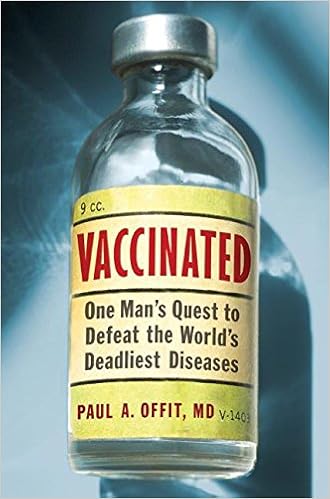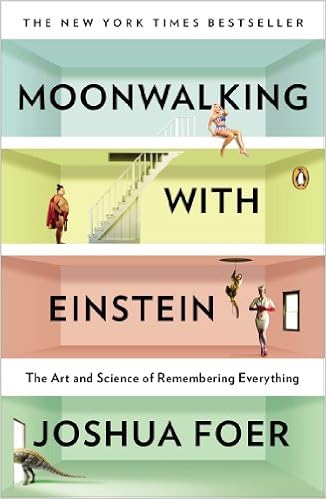
"Powerful ocean waves fascinate the general public, they usually have made loads of information lately." With that undeniable commentary, scientist J. B. Zirker takes to the air on a whirlwind journey of the realm of waves―from the "ordinary" waves that continuously churn the ocean to the rogues or freaks that may get up doubtless from nowhere to heights of 20 meters or more... and every thing in between.
Addressing questions such a lot ocean viewers have had and providing new ones for our attention, The technological know-how of Ocean Waves explains in obtainable language how waves are shaped, how they stream, how they turn into large and damaging, and the way they're being studied now for clues that might aid us plan for the future.
Devoting chapters to wind, tides, currents, breakers, tsunamis, forecasting, renewable power, and El Niño―as good as discussing the gentler houses of ocean waves which motivate us and provide possibilities for rest and recreation―Zirker explores the actual elements that create waves.
Drawing on many of the fresh storms that experience devastated whole regions―such as typhoon Katrina, the tsunami introduced through the 2004 Sumatran earthquake, and the nice tsunami that beaten the shore of Japan in 2011―Zirker explains the forces that reason those monster waves and divulges the toll they tackle human lives.
Enhanced by way of dozens of illustrations and a complete word list, The technological know-how of Ocean Waves will fascinate someone fascinated by the technology in the back of the headlines.
Praise for J. B. Zirker
"Scientists be aware of their stuff yet are infrequently reliable storytellers, while sturdy storytellers hardly ever own the mandatory sweeping command of a systematic self-discipline. Zirker is that infrequent animal who can either speak the main challenging technical element and make it accessible."― New Scientist
Read or Download The Science of Ocean Waves: Ripples, Tsunamis, and Stormy Seas PDF
Best Science books
Vaccinated: One Man's Quest to Defeat the World's Deadliest Diseases
His goal—to hinder each illness that often attacked children—was impossible. yet Maurice Hilleman got here shut. Maurice Hilleman is the daddy of recent vaccines. leader between his accomplishments are 9 vaccines that virtually each baby will get, rendering previously lethal diseases—including mumps, rubella, and measles—nearly forgotten.
An Introduction to the Mathematics of Financial Derivatives, Third Edition
An creation to the maths of monetary Derivatives is a well-liked, intuitive textual content that eases the transition among easy summaries of monetary engineering to extra complicated remedies utilizing stochastic calculus. Requiring just a simple wisdom of calculus and chance, it takes readers on a travel of complex monetary engineering.
In Defense of Food: An Eater's Manifesto
No 1 long island instances BestsellerFood. there is lots of it round, and all of us like to consume it. So why should still someone have to shield it? simply because within the so-called Western vitamin, nutrition has been changed by means of foodstuff, and customary feel by means of confusion--most of what we’re eating this day is longer the manufactured from nature yet of nutrition technological know-how.
Moonwalking with Einstein: The Art and Science of Remembering Everything
The blockbuster phenomenon that charts an awesome trip of the brain whereas revolutionizing our proposal of memoryAn fast bestseller that's poised to develop into a vintage, Moonwalking with Einstein recounts Joshua Foer's yearlong quest to enhance his reminiscence below the tutelage of best "mental athletes. " He attracts on state-of-the-art learn, a shocking cultural heritage of remembering, and venerable tips of the mentalist's alternate to remodel our realizing of human reminiscence.
Additional info for The Science of Ocean Waves: Ripples, Tsunamis, and Stormy Seas
And seashore cusps seem on seashores world wide, so learning them turns out to be useful. monitoring Waves around the Continental Shelf lately oceanographers have performed a few campaigns to degree waves and currents on a coast and to enhance forecasting types similar to SWAN and Delft3D. a favourite website for such paintings is at the North Carolina coast. Off the Outer Banks city of Duck, the continental shelf rises slowly and easily towards the shore for approximately a hundred km. It presents a terrific open air laboratory. the military Corps of Engineers has maintained a coastal study station there for a few years. in the summertime and fall of 1997, the Corps hosted a number of hundred scientists in a field test referred to as Sandy Duck. Their target used to be to higher know the way sediment is moved by way of breaking waves and the way shores evolve. The scientists deployed a wide array of buoys and sensors alongside the shore in addition to alongside a line perpendicular to shore. additionally, they arrange an array of fi xed sensors within the surf region to degree currents and sediment focus. They conducted 30 assorted experiments, starting from the dimension of 118 The technology of Ocean Waves waves, currents, and backside topography, to the swash of damaged waves up the seashore. in this crusade a tremendous hurricane that raged for 4 days elevated the utmost wave peak to four m. in the course of related storms in 1985 and 1990, a sandbar had shaped and moved offshore, leaving a deep trough in the back of it. As each one typhoon handed, a process of rip channels had torn in the course of the bar. yet in 1997, a protracted bar shaped with out a deep trough just about the seashore. The resource of the sand remained a secret. furthermore, the bar contained rip channels in the course of the complete interval instead of simply after a typhoon. a number of motives have been proposed for this habit, however it grew to become transparent that an excessive amount of used to be nonetheless unknown. The coast at Duck is battered via hurricanes each year from September to December. A group from the Naval Postgraduate university at Monterey Bay, California, determined to watch the waves at Duck throughout the typhoon season of 1999, as a part of a bigger workout known as the Shoaling Wave scan (SHOWEX). They manage a line of six waverider buoys among depths of 21 and 195 m. those buoys degree horizontal and vertical displacements on the sea floor; from those measurements, wave peak spectra and directional spectra could be made up our minds. moreover, the staff laid down six backside strain sensors in a line parallel to the shore at a intensity of 24 m to degree wave instructions correctly. The military group used to be tremendous fortunate. In 3 months they skilled 4 hurricanes— Floyd, Gertrude, Irene, and Jose (categories five, four, three, and a pair of, respectively). Their gear labored always for 3 months with out a flaw. They scooped up a ton of information. in the course of storm Floyd, the significant wave peak reached eight m at a hundred km offshore yet simply four m close to the shore. an identical impression was once visible in the course of storm Gert. hence, the wave power decayed through an element of four because the waves crossed the internal shelf.



